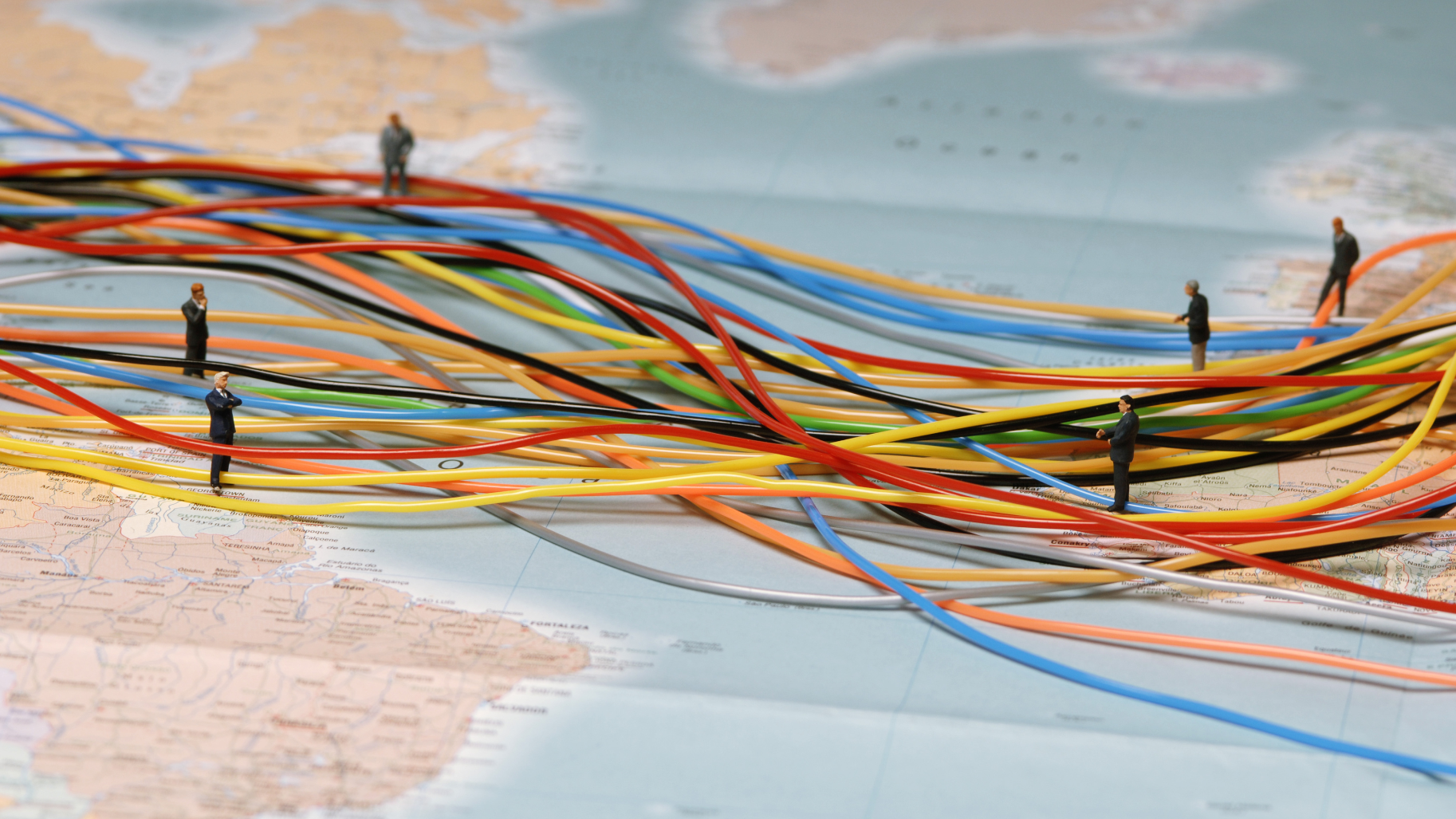Exploring new research topics through international partnerships
Date:
Changed on 12/07/2023

In scientific research, international collaboration is essential. Inria develops strong partnerships with countries around the world through the "Associated Teams" program. Every year, a call is launched allowing Inria scientists to submit joint research projects with international academic partners. For three years, the funds granted support the mobility of scientists and the organization of working groups. At the Inria Centre at the University of Bordeaux, there are currently twelve such projects. Five of them have just ended and it is time to take stock.
There are many reasons for these international collaborations. On the one hand, foreign laboratories may have technical and technological needs. For example, as part of the associated ANTS team, scientists from the Makutu project team at Inria are developing tools for physicists at the Max Planck Institute for Solar System Research in Göttingen, Germany. They "study the interior of the sun by observing the propagation of surface waves and had needs in terms of numerical methods for their simulations", explains Ha Pham, a research fellow at Makutu project team and head of ANTS. "On the French side, we have expertise in wave propagation, which allows us to develop efficient and accurate tools to simulate this phenomenon in a solar environment. [...] The German side has expertise in solar physics and they have access to real data, which we compare with our simulation results."
On the other side, different research topics can combine to develop new methodologies and tools. For example, within the framework of MARE, the Department of Aeronautics and Astronautics at Stanford University in the United States and the Memphis project team at Inria are contributing to the development of numerical methods that, by building on the results of previous simulations, accelerate subsequent simulations. In particular, the goal is to ensure that the properties of these methods are preserved even after combining them with data from simulations. Angelo Iollo, university professor and head of Memphis project team and MARE, explains: "The general idea of the project is to pool the hyper-reduction techniques that our American colleagues have mastered with the decomposition of reduced models that we have mastered at Memphis. Then we looked for commonalities between the two techniques and developed those that were most interesting".
To carry out these collaborations, communication cannot be limited to video conferences and phone calls. "Working and thinking are much more intense in person", assures Angelo Iollo, "because our discussions are much richer when we interact directly with our foreign colleagues in the same lab". Not to mention the different time zones, which limit the amount of time available to talk to each other from a distance. "Coming to each other's workplaces makes discussions much easier", confirms Ha Pham.
In fact, mobility appears to be essential. The way of doing research is different from one country to another, depending on the work culture. Long-term immersion in a foreign laboratory is therefore necessary to collaborate and produce relevant results. Some thesis topics can be further developed thanks to the expertise of international partners, which is why some doctoral students go abroad for a year.
Scientists also build their thinking from the results of their colleagues, during seminars and workshops that also require travelling. These exchanges pay off, as Angelo Iollo explains: "In the end, we succeeded in conceiving an effective methodology that couples hyper-reduction with reduced models". Ha Pham agrees: "The tools we have developed have enabled us to build simulations that fit well with the data collected by the Max Planck Institute".
Verbatim
The "Associated Teams" program is a start, but it is fundamental.
Auteur
Poste
University professor, head of the Memphis project-team and of the MARE associated team
Even if the program is limited in time, the partnerships can be made to last. "This is just the beginning", affirms Ha Pham. "ANTS was just a preparatory period. The questions we want to address need a lot of numerical and theoretical developments. 4 years was not enough. In addition, in physics, the equations that have been studied for a long time can have limits, which means that we have to start again with other models." Hence the importance of a long-term collaboration. Angelo Iollo is equally enthusiastic and has already asked for a new associated team with the same foreign laboratory: "MARE has enabled us to lay the foundations for what we want to do next".
In addition to the financial support, the program also helps to "put the spotlight on our work", according to Angelo Iollo. "It gives visibility and there is an avalanche effect that leads to other funding." He also relates that MARE has made it possible to "establish substantial links, not just formal ones", justifying the American team's attendance at the Aria workshop that the Memphis project team organizes and where the most important figures and industrialists in their field of research are gathered. Ha Pham even adds that there is "an official recognition of the collaboration on the Inria side and at the international level, in addition to leaving a trace of the partnership".